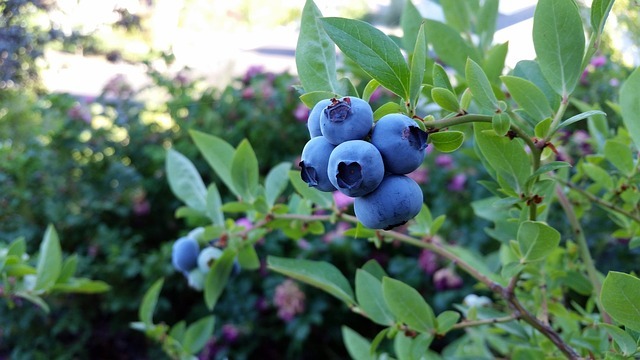Growing blueberries could be one of the healthiest moves you could make.
The tasty little berries can be purple to blue and are packed with antioxidants that can lower your cholesterol and well as reduce your risk of cancer.
The attractive bush-like plants will provide an abundant crop year after year if properly cared for.
Soil
The most important thing to understand is that they are an acid soil-loving plant. Sandy, aerated ericaceous soil, rich in nutrients is a must, with a PH no higher than about 5.0.
This makes them ideal candidates for growing in pots and containers – as you can maintain better control over the soil.
Collect pine needles from the floor of a nearby forest and sprinkle them on the soil around the blueberry plant – this will supplement the soil to make it more acidic.
Sun & Frost
They are also sun worshippers. They will tolerate partial shade, but the more shade, the lower the production of berries.
When first growing blueberries, you need to plant out only after the danger of frost has completely passed.
Growing From Seed
Growing blueberries can be done from seed. It’s a slow process, but worthwhile. They can be started at any time of the year. Make sure you have good quality seeds from a reputable dealer and keep them in the freezer until you are ready to use them.
Gathering them from supermarket-purchased fruit may not necessarily be a good idea, as the results may be poor, or even non-existent, and your time and effort may be wasted.
Start by preparing a seed tray and sprinkling them onto some peat moss. Once sprinkled, lightly move the soil with your fingers to cover the seeds very slightly, and then water. Always keep them moist.
It can take six to eight weeks for the first seeds to appear. They will be grass-like with a couple of tiny leaves on top. Other seeds may take up to three months to appear.
In the first year, you will get plants no taller than about 5-6 inches. Be sure to protect them during the winter by leaving them indoors on a sunny windowsill.
Once the plants are large enough to handle, transplant them into pots and keep well watered in sunny, warm conditions.
In year two the plants will have grown to about one to two feet tall and will start producing a small number of fruits. It will take several years when growing blueberries from seed, before the resulting plants will produce a lot of fruit, but once established they will keep you supplied for decades as long as you feed and maintain them.
Growing From Plants We would have to say that growing blueberries from established plants is by far the simplest way to go.
Firstly, it’s a good idea to plant two or more varieties of blueberry plants, this will allow them to cross-pollinate, which will ultimately give you a much better yield with bigger fruits. A good way to do this is to get an early, a mid, and a late variety planted together. This will give you blueberries for a longer period throughout the year.
In the first year or two, it’s a good idea to pick the flowers off so that the bush puts its energy into making itself bigger and stronger, rather than producing fruit. This will give you much greater yields in the subsequent years.
Growing blueberry bushes from small plants is quite straight forward. Select a time during the winter months when the plant is dormant, this will prevent it from being shocked by the transplanting process.
Ensure the acid soil is well aerated and rich, with a maximum PH of 5.0.
Make sure it is given enough room to grow to about a meter tall by almost a meter wide. Add some mulch around the newly planted plant, and water.
Allow it to settle in for a few weeks and then feed regularly for the best crops.
Tip: Just before it starts flowering, give it some sulfate of potash fertilizer which will increase the flowers and give a bigger yield.

